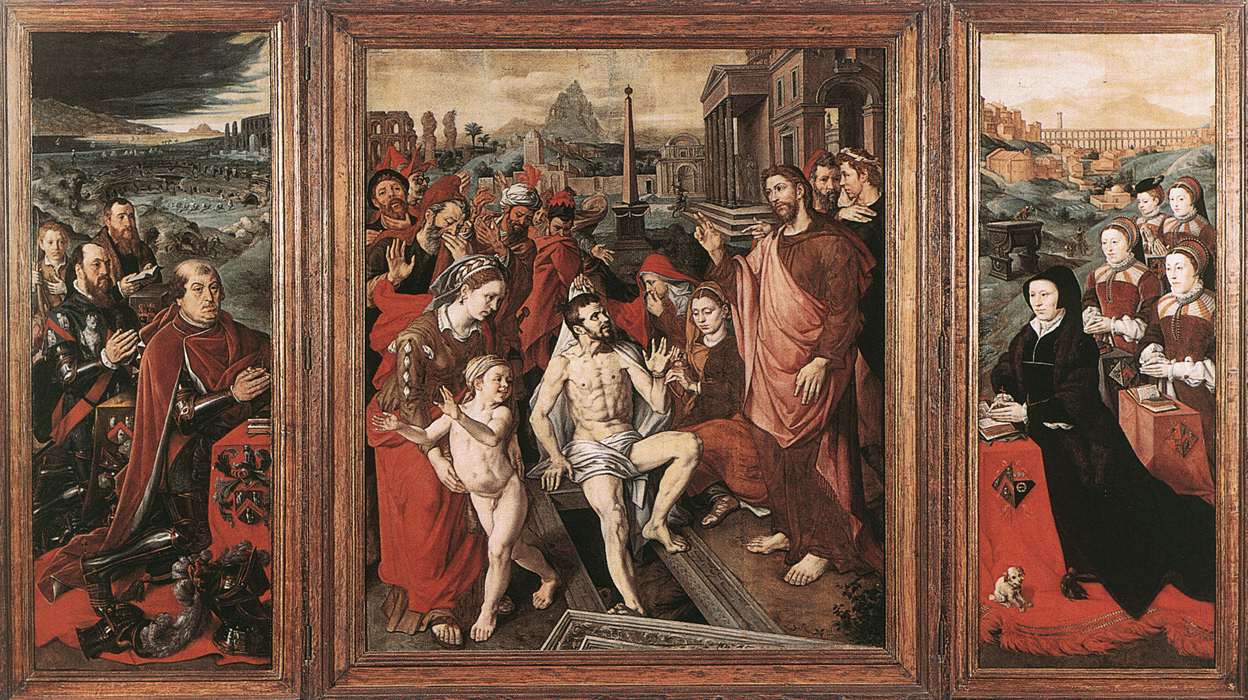The Raising of Lazarus by Jan Vermeyen, John 11:14-45, Bible.Gallery

The Raising of Lazarus created 1547 nad was completed in 1549 Its dimension is 230cm wide and 150cm high and it was drawn with oil on panel style.
Artwork Description
This attractive triptych comes from the chapel of the Holy Sacrament in St Michael's Cathedral in Brussels, where Charles V's collector-general, Jean Micault and his wife Livine Cats van Welle were buried. The altarpiece was probably commissioned by their second son Nicholas in their memory. This is why they appear with their children on the wings, he wearing the mantle of the treasurer of the Order of the Golden Fleece, with his armour perhaps alluding to his having been knighted, she dressed in a black robe and a fur. Both carry little crosses in their hands, which shows that they have died, as do the adolescent boy to the far left and the girl in the plumed hat on the right-hand wing.
The central panel illustrates the greatest of Christ's miracles, the resurrection of Lazarus, the brother of Martha and Mary, after lying dead for four days. Apostles but also Jews, recognisable by their turbans, press round the tomb. Certain of them hold their noses or their throats, reminding us of Martha's words: "Lord, by this time he stinketh" (John 11,39). Martha, helped by Mary, is relieving Lazarus, sitting on the edge of his tomb, of the winding cloth in which he had been buried. At the bottom of the tomb lies his brownish corpse. Lazarus is looking at Christ with stupor. The strongly silhouetted figures standing round exude a certain coldness appropriate to an epitaph. It is the background landscapes, however, that provide the exceptional feature in this triptych, with their unusual oriental décor, albeit particularly appropriate for a biblical subject. From left to right, we recognise the bay of Tunis, the arena and aqueduct of Carthage, a Tunisian mosque, an antique-looking temple and obelisk, the aqueduct of Segovia, a primitive basilica, a domed tomb and a curious sarcophagus-shaped building.
In fact Vermeyen had joined Charles V in Spain in 1533/34. From there he followed him to Tunis, where he was commissioned to immortalise the Emperor's battle there. The many sketches he made on this voyage served in particular for an unequalled series of twelve tapestries, ordered by Mary of Hungary a few years before the triptych. By selecting a context referring to the imperial expeditions for this painting, Vermeyen probably wanted to emphasise the close connections between the Micault family and the Habsburgs.